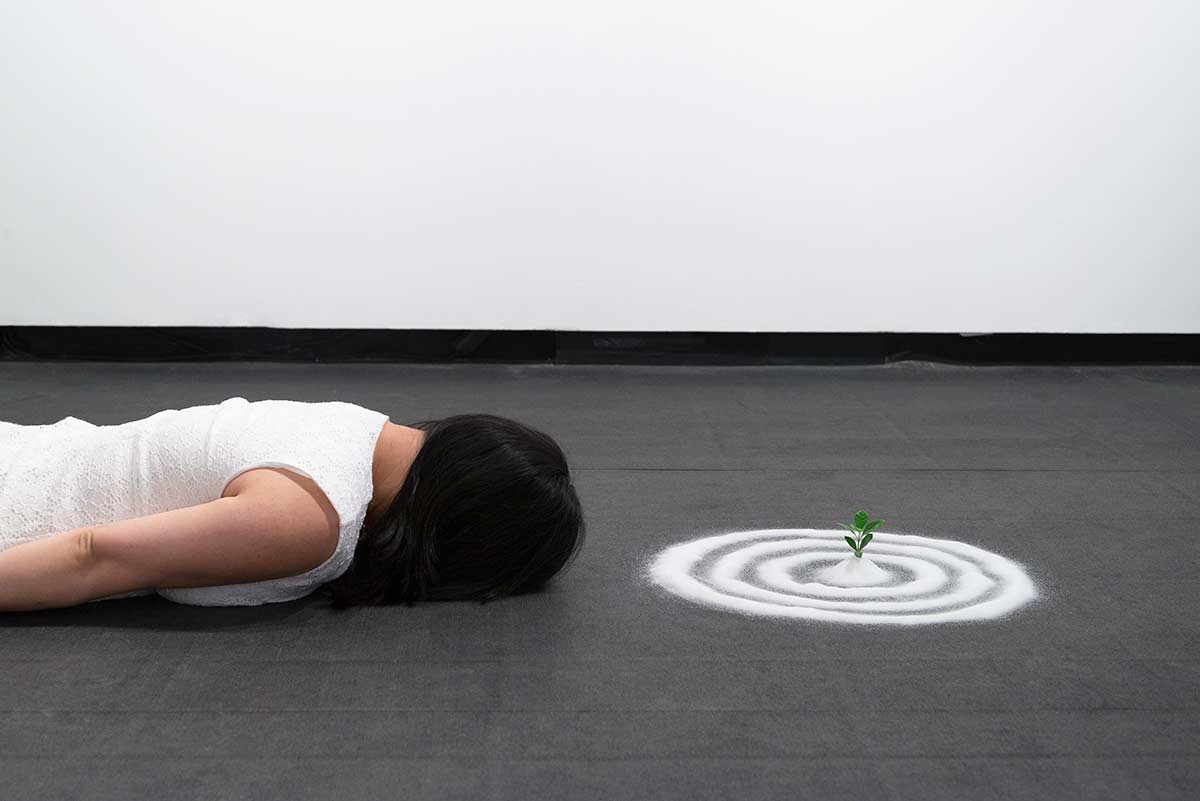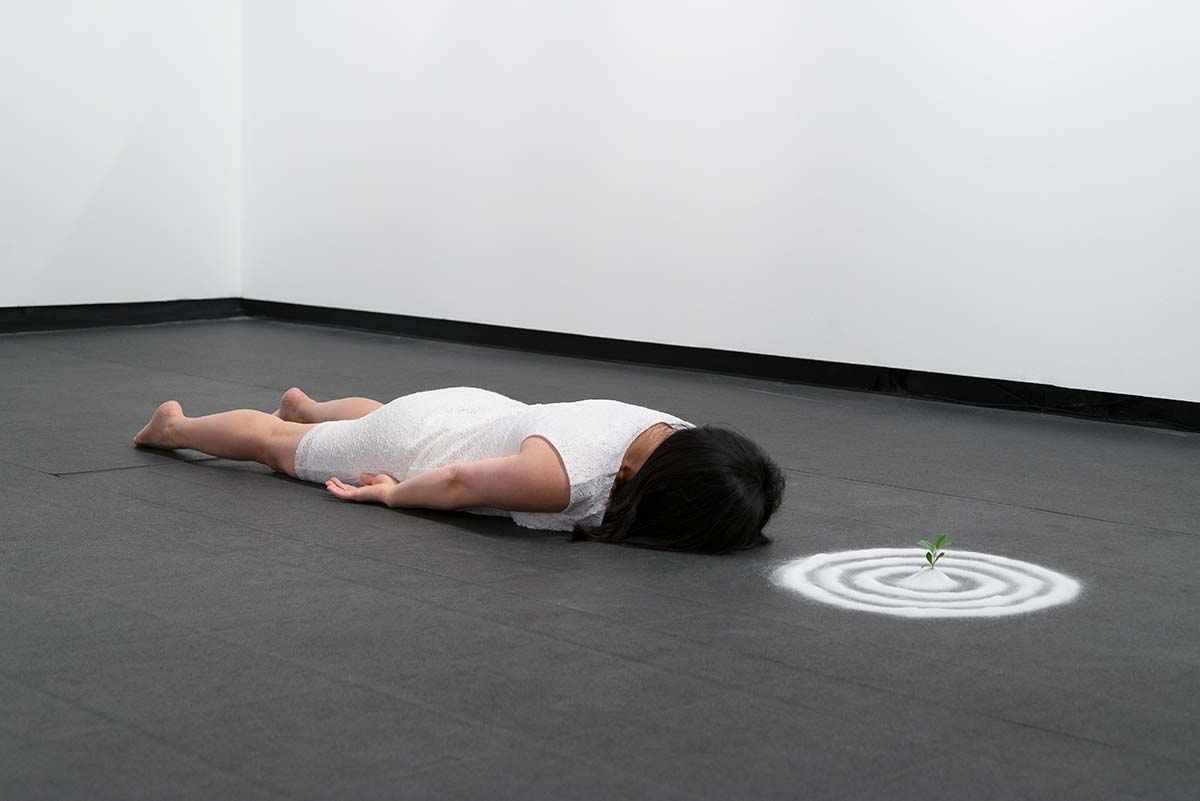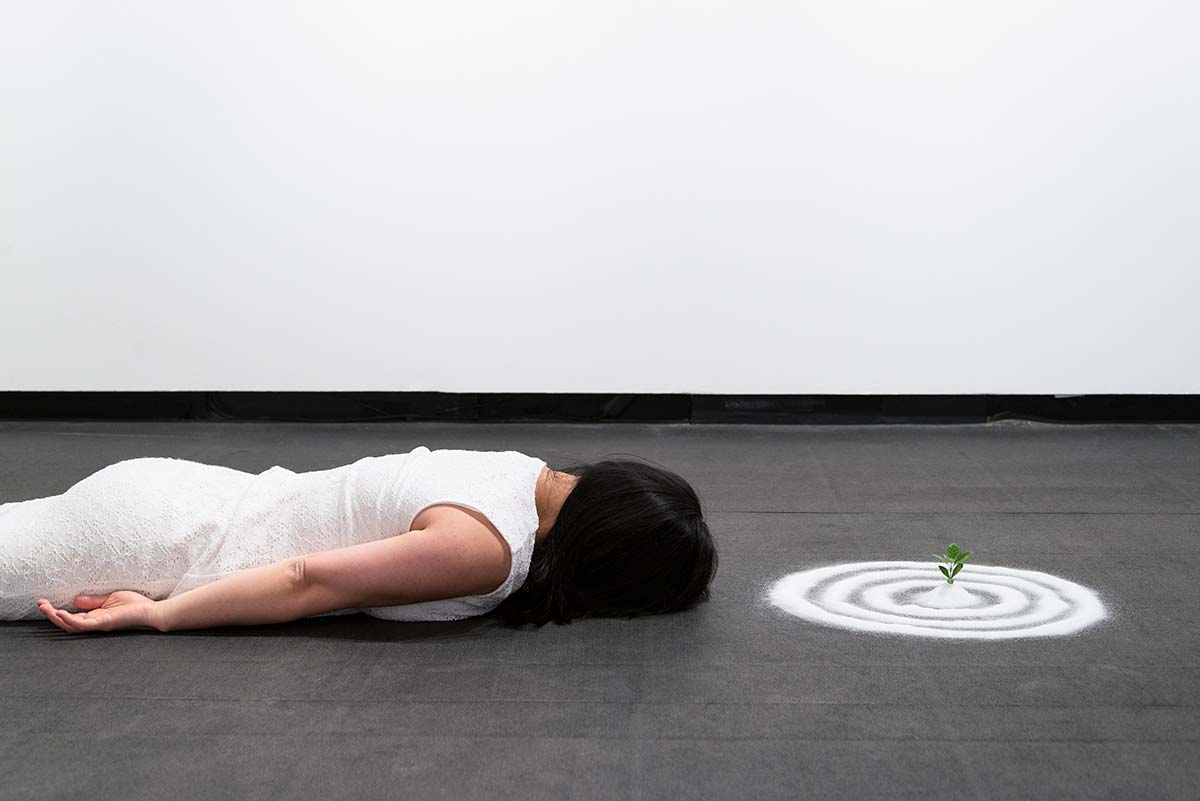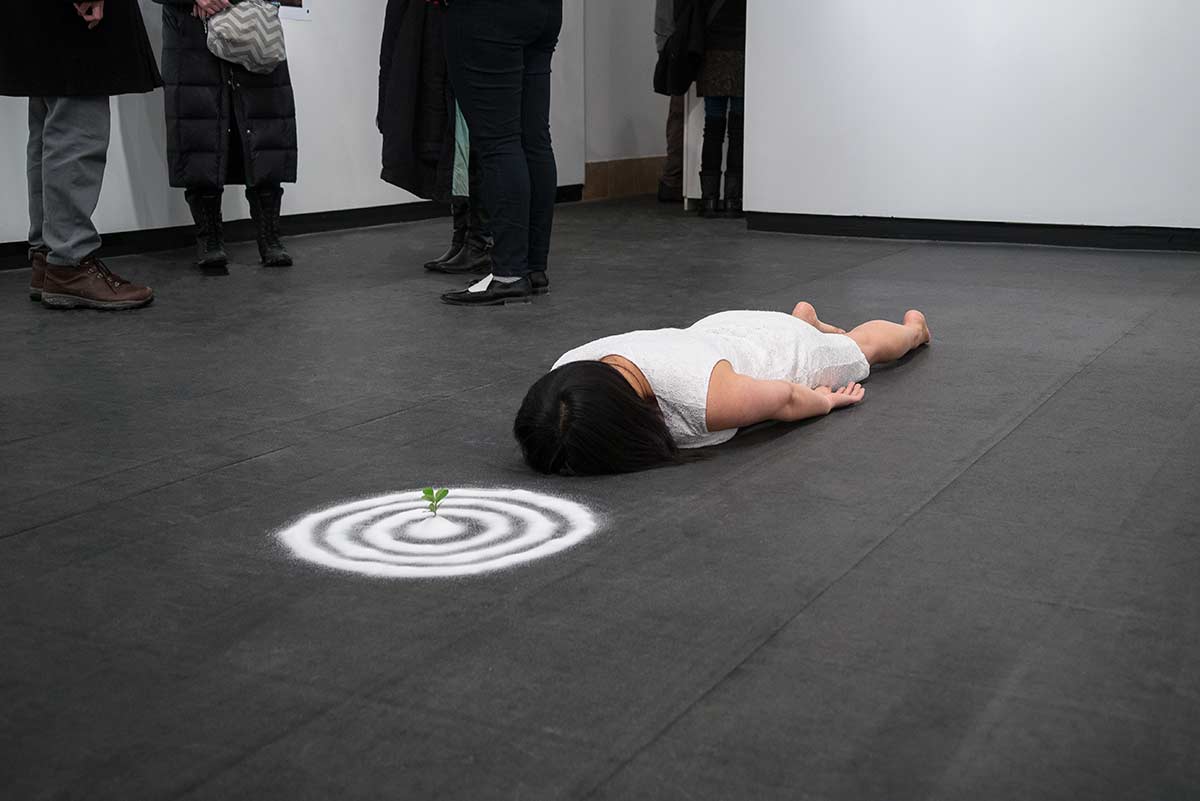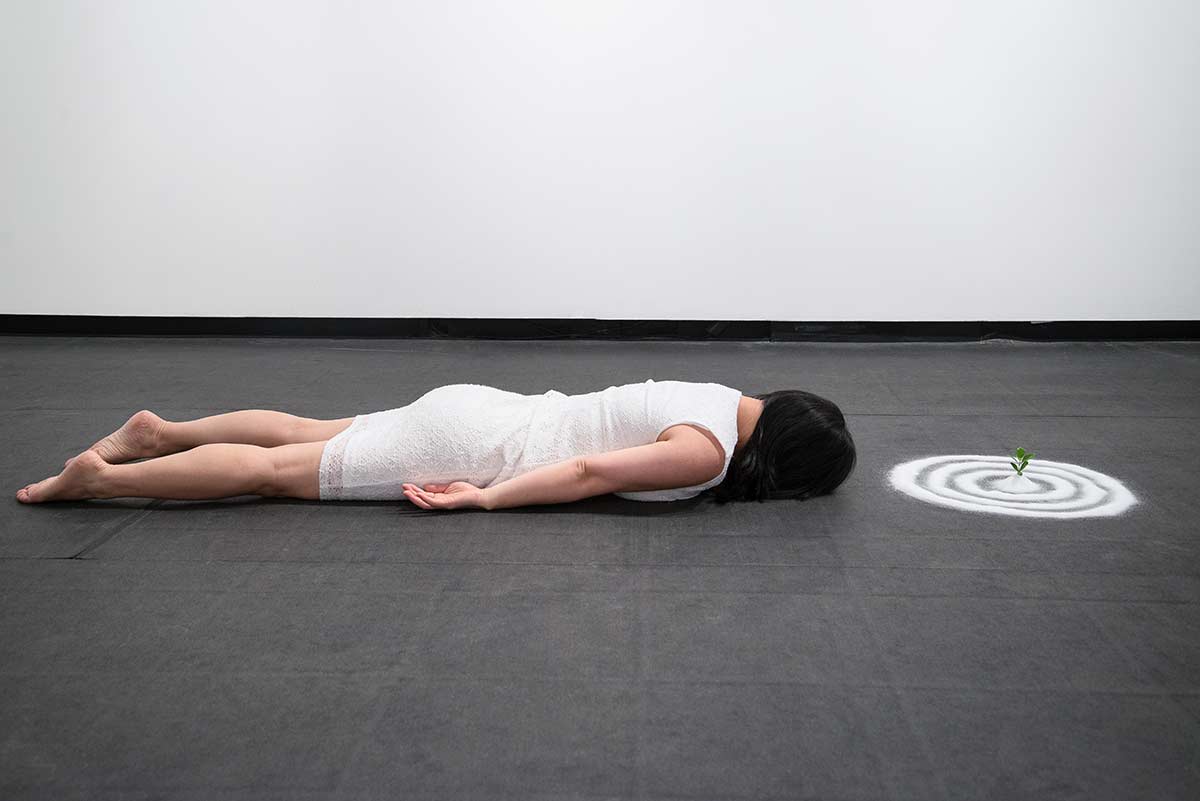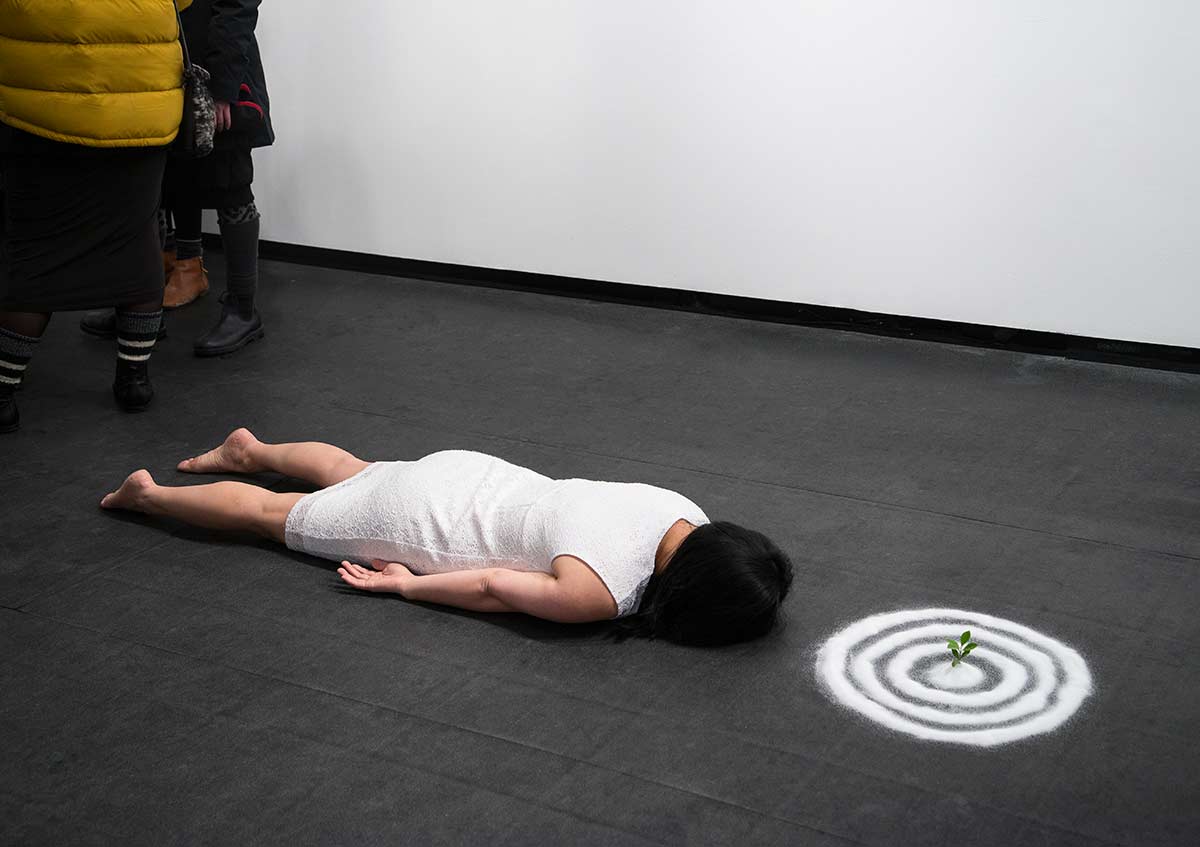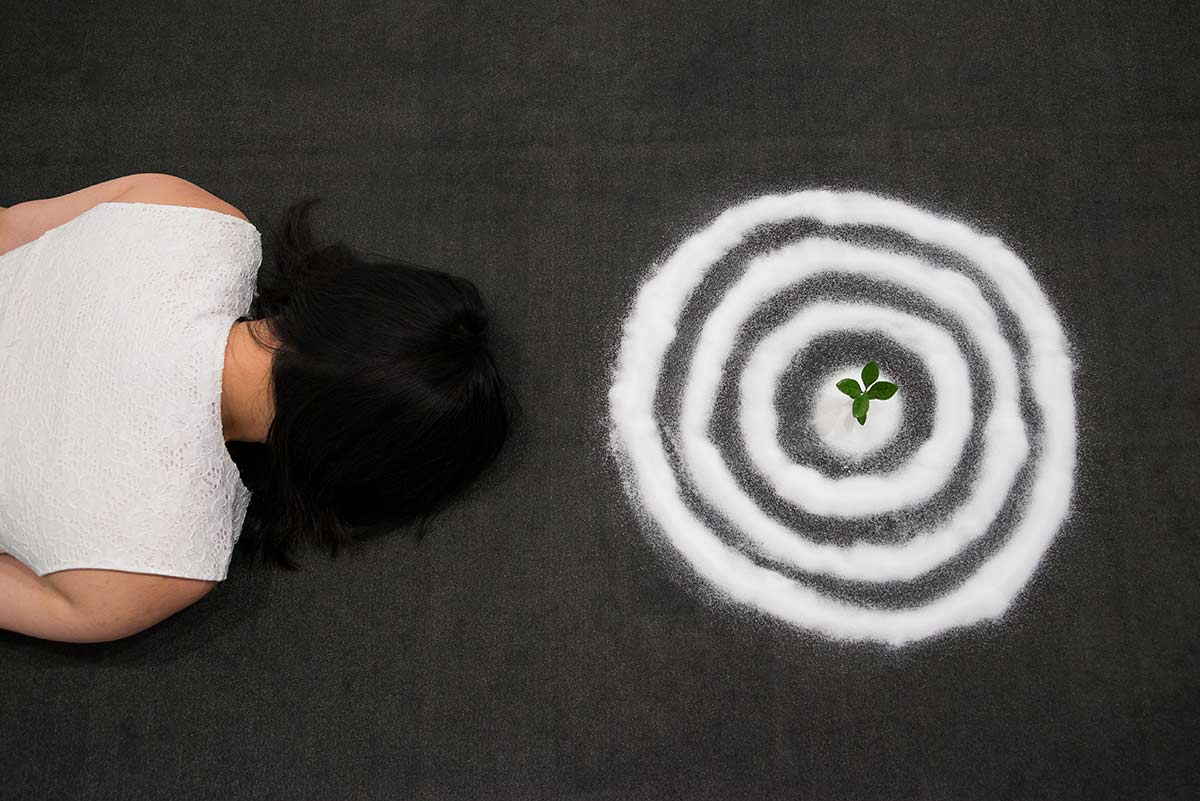I use salt to build circles around a Gardenia twig, and lay in front of the circles, face down, keep still for three hours. This work examines the visual culture of shame in relation to the body, subjects and power in contemporary art. Over the past two years, I have been creating a series of works related to shame that integrates performance, photography, video, and installation. my focus is exploring the visual culture of shame associated with vulnerability in its personal and socio-political dimensions, deconstructing the experience of shame through gestures, movements and audience participation. In my practice, I considers feminism, globalization and psychoanalysis, positioning shame as a feminist strategy of resistance—an ethical practice that seeks altered states of consciousness that possibly leads to restore dignity and humanity.
Shame is a complex, universal and often painful affect connecting subjects to social relations. It is an innate human reaction rooted in childhood experience, and it is linked to sexuality and the cultural norms that regulate the body. Shame operates on the relation between self and other, between the emotional and social. The etymology of the word shame is derived from the Old German meaning, “to cover” or “to hide” oneself. The dynamics of shame revolve around the world of sight and of being seen. Freud suggested that visual pleasure is related to shame, as the physical gestures of blushing, downcast eyes and slack posture are projected on another—the subject imagining herself as seen by the gaze of the other. This aspect of shame as located at the interface between a vulnerable self and an outsider, between cover and discover, makes it significant in visual art.
But Freud didn’t consider eastern cultures. Asian societies are associated with “shame culture.” In this context, on the one hand, shame can involve honour and positive change. On another hand, it is an insidious social control mechanism playing on the emotion’s negative aspects. Despite the rise of feminism and many acts of aesthetic, theoretical and cultural transgression that have attempted to challenge taboos, the deep structure of shame has not been significantly undermined. Shame is, therefore, a central feminist issue, and an important one to rise within my artwork and its associated research.
The Inner Circle is part of my solo exhibition, Visual Poetics of Embodied Shame, at The New Gallery, Edmonton. CA.
For catalog essay about this exhibition, by Jenna Swift, please visit
http://www.thenewgallery.org/visual-poetics-of-embodied-shame/
photo credit: Ashley Be
Share this:

